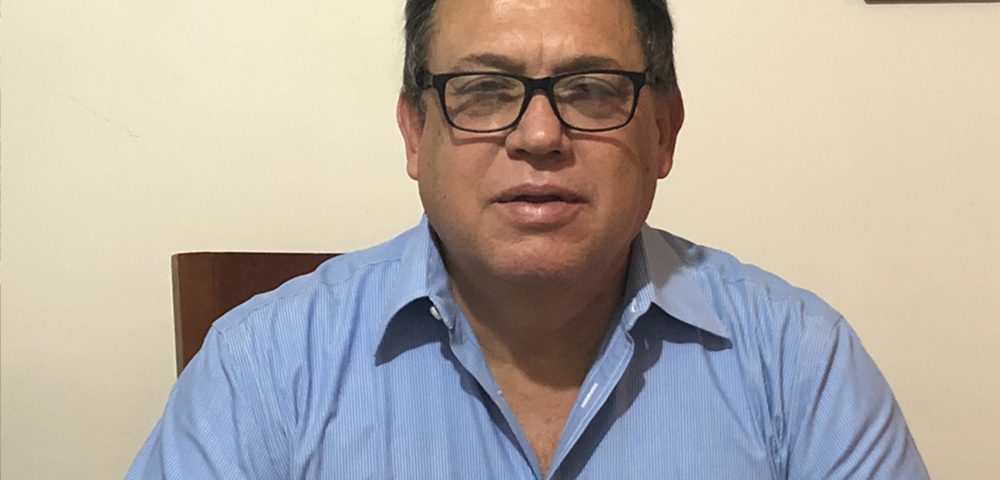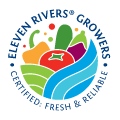Interview: Ph.D. Jorge Humberto Siller Cepeda

The Ph.D. Jorge Humberto Siller Cepeda, is originally from Saltillo, Coahuila. He has a doctoral degree in Plant Physiology. At the moment, he is the Director of Innovation, Sanitation, and Food Safety of the Secretary of Agriculture and Livestock of the Government of Sinaloa.
1. Could you share us a little of your professional experience?
I am a Fruit Engineer graduated from the School of Fruit Growing, Autonomous University of Chihuahua (1979), Master of Science (1986) and Doctor of Science (1991) from the Oregon State University, USA.
In addition, I have accredited 18 refresher courses in the field of Agricultural Biotechnology, Agricultural Sciences, Food Safety, Quality and Sustainability.
From 1980 to 2008 I worked professionally as a Practicing Researcher, Assistant Researcher, Assistant Investigator and Senior Researcher in the public sector (INIFAP and CIAD).
I was founder of CIAD Culiacán and Director of the institution for 14 years. I was a project evaluator for CONACyT, FOMIX and several national programs.
From 1990 to 2008 I was National Investigator Level I of the SIN and in 2005 I received the State Research Award by the Governor of Sinaloa.
I am the author of more than 185 publications and I have participated with more than 120 works in National and International Congresses and given 75 Conferences by Invitation.
I am a pioneer in Sinaloa in the implementation of the Food Safety and Quality Systems and author of several publications to reduce contamination risks, including the Guidance to Good Agricultural Practices published in 2002.
In 2008 I joined the private company Desert Glory Greenhouses, as a Consumer Satisfaction Director focused on certifying the quality and Food safety of the Nature Sweet Tomatoes brand, achieving the SQF Level 3 certification in 2010 and a significant reduction in its post-harvest losses in its five production units.
In April 2010 I joined the SuKarne Group as Director of Sustainability, having the responsibility to develop and implement the environmental, social responsibility and economic programs, as well as the research, innovation and technological development programs.
In 2012, take additional responsibility for industrial safety in the company and in 2014 also attach responsibility for quality and Food Safety programs, achieving various certifications such as PSM (Process Safety Management), clean industry, GRI, ESR, BRC, Génesis GAP and BPP, among others.
In 2017 I joined the Secretary of Agriculture and Livestock of the Government of Sinaloa as Director of Innovation, Sanitation and Food Safety, as I currently work.
2. What do you consider to be the main challenges facing the agricultural industry today?
The Secretariat has carried out a methodical analysis on the situation of Agriculture and Livestock in the State and has defined six guiding axes to support the main challenges of the sector.
These six axes include:
- Improve profitability
- Develop innovation
- Modernize the agricultural hydraulic infrastructure, logistics and services
- Transform information systems,
- Reiterate sustainability, and
- Strengthen sanitation and Food Safety programs.
3. How important is science and research for companies in Sinaloa?
It is a preponderant topic to innovate and generate practical and applied knowledge in the welfare of agriculture and the regional economy. Requires continuous support to develop research projects on the basic needs of growers that entail to reduce production costs, increase yield, optimize inputs and natural resources, develop more resistant varieties with better quality, give added value to products, among many other important topics.
4. How important is Food Safety in agricultural production?
Maintaining leadership in the production and commercialization of agricultural products both within the country and abroad, requires establishing clear and innovative mechanisms to shield and protect the State from the introduction and dissemination of pests and diseases, as well as to implement systems to reduce contamination risks. This last item is the basis to build reliable Food Safety systems in agricultural production, which every day becomes more important to ensure healthy and safe products that allow maintaining and / or opening sanitary barriers to new markets.
5. How important are certifications in export markets?
Nowadays the certifications of an independent third party, accredited and recognized by the corresponding instances, play a fundamental role in the commercialization of agricultural products, since it allows to generate trust and certainty with the consumers making them distinguish a brand or company for its credibility and responsibility.
6. What are the areas of opportunity that Sinaloa companies have to improve their competitiveness?
Reduce costs, differentiate quality, add value, be sustainable in the three axes (Environment, Society and Economy), multiply culture to establish credible and effective Food Safety programs, generate scientific information that endorses their operations, innovate their processes and shield and protect their crops from the introduction and spread of pests and diseases.
7. In what projects does the SAyG works for the development of Innovation, Sanitation and Food Safety?
We work together with SENASICA and the Auxiliary Organizations (Sinaloa State Plant Sanitation Committee – CESAVESIN, and the Sinaloa Animal Protection and Promotion Committee – CEFPPS) supervising and monitoring the operation of phytosanitary and animal health campaigns, as well as strengthening the Pollution Risk Reduction Systems and the Laboratories we have so that they are equipped with cutting-edge tecnology for the required analyzes, as well as accredited and recognized by national and international authorities.
An important part of the activities in the area of Sanitation and Food Safety are concentrated in the new Coordination of Sanitation and Food Safety of Sinaloa Act, which we have developed together with producer organizations and authorities. This law includes the legal and legal framework to act on the matter and empowers the Secretariat through State officials to operate fixed and itinerant inspection and verification points to have a better control of the movement of agricultural products and by-products.
The mobilization of agricultural products requires at all times to know where they come from and how the products have been handled until they reach their destination. Knowing the origin and traceability has become a necessity to generate confidence in consumers.
In Sinaloa, we have entered into an agreement with SENASICA to approve and certify a group of state officials who work at the phytozoosanitary inspection and verification points, assisting SENASICA and the Auxiliary Organizations (CESAVESIN and CEFPPS) in reviewing the documentation and agricultural products in transit to ensure that they comply with federal regulations and state guidelines for their introduction and transit through the State.
Additionally, we have formed a group of itinerant state officials who move in patrols monitored by satellites in real time on routes that converge to the main access roads to the large towns where commercialization takes place. This allows us to know exactly the origin of the products and have the necessary information for their traceability, important points that are required to achieve higher phytozoosanitary status.
8. How will the Santitation Intelligence Unit benefits the primary sector of Sinaloa?
The Secretary has reformed its organization chart and created the Directorate for Innovation, Sanitation and Food Safety, which reports directly to the Secretary of Agriculture. Under this new Directorate the Sanitation Intelligence Unit has been formed, an area of particular importance to pay attention to these issues within the framework of the Food Industry 4.0.
This Unit has big digital screens connected to the Internet and with access to satellite images and information generated in drones that has allowed it to georeference each production or processing unit (that is, to have different layers of location with geographic coordinates).
Today we know the exact position in Sinaloa of each bovine production unit (stockpile pens, feedlots, quarantine herds, traces), poultry (posture farms, fattening farms, traces), swine (breeding farms), production, traces), aquaculture (farms crustaceans, molluscs and fish) or agricultural (fields of vegetables or fruit orchards) in the state, as well as the statistics of production and value for each sector. Additionally, we have clarity in the position of the trapping routes and monitoring of the campaigns developed and operated by the Auxiliary Organizations (CESAVESIN, CEFPPS and CESASIN).
This allows us in real time and before any eventuality of a focus of infection, make the necessary risk analyzes, establish the sanitary cords, and act with preventive and corrective measures as the case may be.
This, we have linked to the climatic stations that exist throughout the state that give information every fifteen minutes on climate variables and that allows knowing the biological cycles of pests and diseases and generate models for their control, determining the times optimal to combat them.
This information allows to know in real time the situation in a certain area and facilitate decision making immediately.
9. Somehing else you would like to add?
Water is an indispensable element for agricultural activities. In this context, the Secretariat has implemented the actions to ensure quality and the highest of this elemental resource.
We have coordinated efforts with the Auxiliary Organizations and the Laboratories, developing a Project of Analysis and Monitoring of the Surface Water of Rivers and Tributaries of all the Hydrographic Basins of the State. We have georeferenced each dam, we are taking samples of the chemical and microbiological quality of the water every eight kilometers along these basins, from the dam to its mouth to the sea. We analyze for the presence of pesticides, heavy metals and microbiological contaminants. In this last factor, if positive, there is a microorganism that has a sequence of the pathogen to know a detail of the strain and determine its origin.
These elements allow us to establish preventive and corrective strategies, as well as be prepared in case of chemical or microbiological contingency.
In addition, in the programs of the Pollution Risk Reduction System, water samples are taken. It is used in processes to ensure that contaminated water is not used for these operations. This water quality information together with the analysis of the planted areas of the different crops for each of the last four years, allows us to make recommendations to make the water resource more efficient, since with the generation of the mechanical indicators of each production (m3 of water / ton of productive product) we will have the necessary information to establish the goals, the necessary data that will entail reducing the current water expenses.


